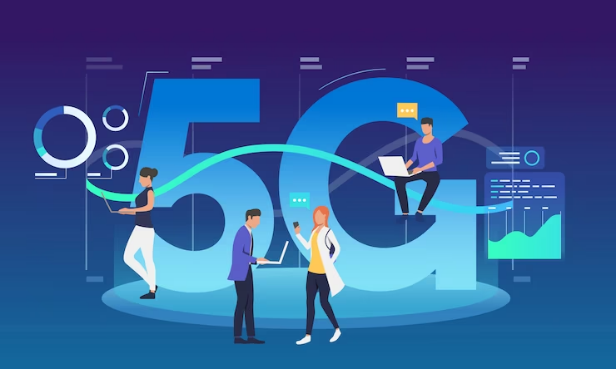
What Is 5G?
What is 5G? In simple terms, 5G stands for “Fifth Generation” wireless technology. It is the latest and most advanced generation of mobile communication networks, succeeding 4G (LTE) technology. 5G promises to bring significant improvements in speed, capacity, latency, and overall performance compared to its predecessors.
Key Features of 5G:
-
Increased Data Speed: 5G is designed to deliver much faster data speeds than previous generations. It can offer peak data rates of up to 20 gigabits per second (Gbps), although real-world speeds might vary depending on network conditions and user devices.
-
Low Latency: Latency refers to the time it takes for data to travel from the source to the destination. 5G aims to significantly reduce latency, providing a more responsive and seamless user experience. This is crucial for applications like online gaming, autonomous vehicles, and virtual reality.
-
Enhanced Capacity: 5G networks can support a large number of connected devices simultaneously. This is particularly important in the context of the Internet of Things (IoT) and the increasing number of smart devices that require stable and high-speed connections.
-
Higher Spectrum Efficiency: 5G utilizes advanced technologies, such as beamforming and massive MIMO (Multiple-Input Multiple-Output), to improve spectrum efficiency. This allows networks to deliver faster speeds and better coverage with existing radio frequencies.
-
Network Slicing: 5G introduces the concept of network slicing, where a single physical network can be divided into multiple virtual networks tailored to specific applications or services. This flexibility allows the network to allocate resources more efficiently and cater to diverse use cases simultaneously.
How Does 5G Work? 5G operates on higher frequency bands compared to 4G, which enables it to offer higher data rates. These higher frequencies, often referred to as millimeter waves (mmWave), have shorter wavelengths but can carry larger amounts of data. However, mmWave signals have a shorter range and can be more easily obstructed by buildings and other obstacles.
To overcome the challenges of mmWave propagation, 5G networks also utilize lower-frequency bands, known as Sub-6 GHz, which offer better coverage and penetration through obstacles. These lower frequencies provide wider coverage but with slightly lower data speeds than mmWave.
Benefits and Potential Applications:
-
Faster Internet: With 5G, users can experience significantly faster download and upload speeds, enabling quicker access to content, smoother streaming, and faster downloads.
-
Enhanced Mobile Experience: 5G can enhance the performance of mobile applications, making tasks like video calling, online gaming, and app usage more seamless.
-
Internet of Things (IoT): 5G’s increased capacity and ability to handle numerous devices at once make it ideal for supporting the growing number of connected devices in the IoT ecosystem.
-
Industry and Healthcare: 5G can revolutionize various industries, including manufacturing, transportation, and healthcare, by enabling real-time data transmission, remote monitoring, and automation.
-
Autonomous Vehicles: The low latency and high reliability of 5G are critical for enabling autonomous vehicles and supporting vehicle-to-everything (V2X) communication.
-
Virtual Reality (VR) and Augmented Reality (AR): 5G can provide the necessary bandwidth and low latency for delivering immersive VR and AR experiences.
Deployment Status: As of my knowledge cutoff in September 2021, 5G deployment was already underway in many parts of the world, with some regions having more extensive coverage than others. Major telecommunication companies and governments are investing in upgrading their infrastructure to support 5G technology.
In summary, 5G is the latest generation of wireless technology that aims to deliver faster speeds, lower latency, increased capacity, and better performance compared to previous generations. It has the potential to revolutionize various industries, support emerging technologies, and enhance the overall mobile experience for users around the world.
